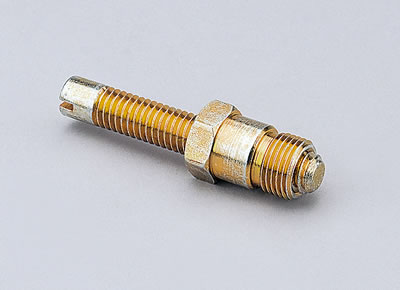"The thing" about timing traditional V8 engines. This does NOT apply to some V6s (even/odd fire) and some 4 bangers.
"The book" shows how to insert the intermediate shaft, that is the drive gear/ oil pump drive, and if done properly, everything comes out "OK"
THE REASON it is originally done that way is
so the assembly line folk can wrench, repeat
so the plug wires "lay" nice
so the tune up guys "see" what they expect.
The TRUTH is you can close your eyes and drop the drive gear in ANYPLACE, plug the distributor in "any" old way, and and then bring the timing marks up on no1 ready to fire, and plug the no1 wire in wherever the rotor points, and it will run just fine.
If the vacuum can is off interfering with something, you can simply turn it where you want, bring no1 up to fire, and plug the no1 wire into where the rotor is pointing.
HERE IS the steps to setting up an engine dist.
1---It is important to realize, that when the cam timing marks are set "by the book" that is cam at 6 o'clock, crank at 12 o' clock, this is NOT no1 ready to fire, but rather no6 ready to fire.
So you either have to plug in the dist. pointing to no6, or rotate the engine 1 turn
2---After the cam is timed, with the timing marks on TDC, the "book" shows how to insert the intermediate shaft. if yours is incorrect and you want to correct it, you can simply use a large screwdriver and "walk" the gear up out of the helix and move it whichever way it needs
The gear on a small block should have the slot pointing nearly straight inline with the crank, just a tad to the driver side pointing at the front most manifold bolt
A B/RB gear the slot should be essentially inline with the crank
3---With this in place, now bring up the no1 cylinder ready to fire NOT on TDC but rather WHERE you want initial timing to be. There are two ways to do that
A---If either valve cover is off, bring the timing marks up to where you want initial time, IE 10BTC or so for a bone stocker, 15-20 for a "cam" or maybe even a little more for a real hot cam
Look at either the no1 or no6 valves. Whichever set of valves is CLOSED indicates which cylinder is ready to fire. If no 6 are closed, you can either plug the dist. in with rotor pointing to rear (no6) or rotate the crank one turn, and plug the dist in for no1 (rotor pointing forward)
B---If the valve covers are on, pull the no1 plug, stick your finger in the hole, and bump the engine around. When you START to feel compression, watch the timing marks, and bring them up to initial time, IE 10-12 BTC
Now plug the dist. in, rotor pointing forward, and put the vacuum can approximately where it should be.
I always mark the dist. upper rim directly under the no1 tower so I don't have to argue with teh cap.
Rotate the dist RETARD (cw for small block, ccw for B/RB) to "get the slack" out of the drive, then slowly ease the housing back advanced until
the points open if you are using points
or until the reluctor tip is centered in the pickup coil core.
This procedure should get you close enough that the engine will start and run with no fuss. Then of course just take your timing light and adjust from there
An aside.
I'm a HUGE believer in checking actual TDC with a piston stop, which you can make or buy
Small block intermediate shaft below. The slot lines up with the front left intake manifold bolt. You can walk the gear up and around with a screwdriver
B, RB, 426 hemi:

















